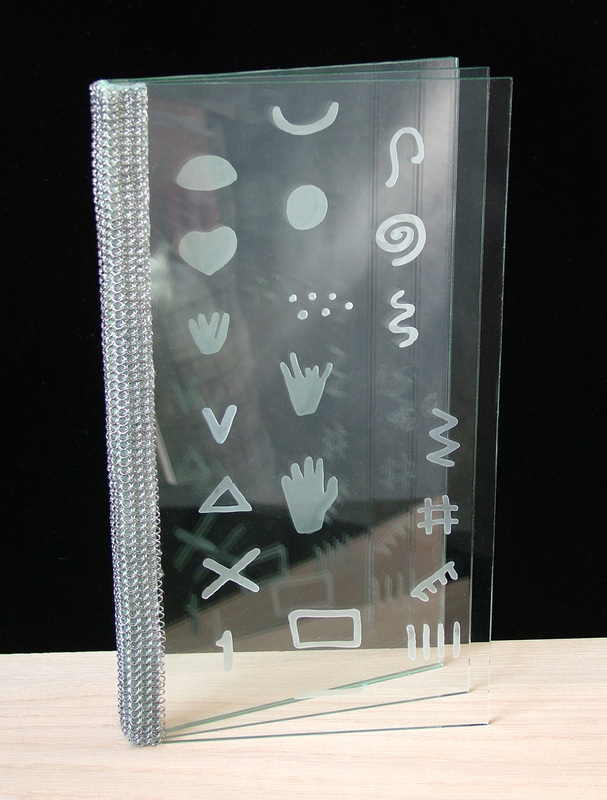
Which Came First: Straight Lines, Curved Lines, Dots, or Hand Prints? (And how did it go after that?)
2013
10.5 x 6.25 x .75 inches
Coldworked plate glass, epoxy, silicone, ripstop nylon, steel mesh
The reference for the cave symbols is from the work of Genevieve von Petzinger of the University of Victoria. I copied, in brush and ink, Ms. von Petzinger’s renderings of the symbols, cleaned my drawings up in Photoshop, made masks, and sandblasted the symbols.
Genevieve created a database of the most common Paleolithic symbols on cave walls in France for her masters thesis. Locations, numbers of signs, etc. are included. For her PhD, she’s expanding the database into other countries. All four categories of symbols are present in the oldest cave art sites, so I ordered the pages of “Which Came First” according to Ms. von Petzinger’s count. Straight lines are the most prevalent sign, so they’re on page one, followed by dots, curved lines, and finally the hand prints. The earliest art archeologists have found so far consists of objects with lines cut into them, so, at the moment, straight lines seem to have the edge for being considered the first abstract mark made by human beings.
Genevieve has published a very interesting interactive set of articles on Bradshaw Foundation’s website on the cave symbols. She and I have been communicating by email for the last couple of years and it’s been a pretty exciting ride so far. Since we started communicating, she’s also published a scholarly article, done two TED talks, had a book published by Simon and Schuster, and become a National Geographic emerging explorer. Last I had heard, she’d done all that and hadn’t even gotten her PhD yet. Very inspirational.